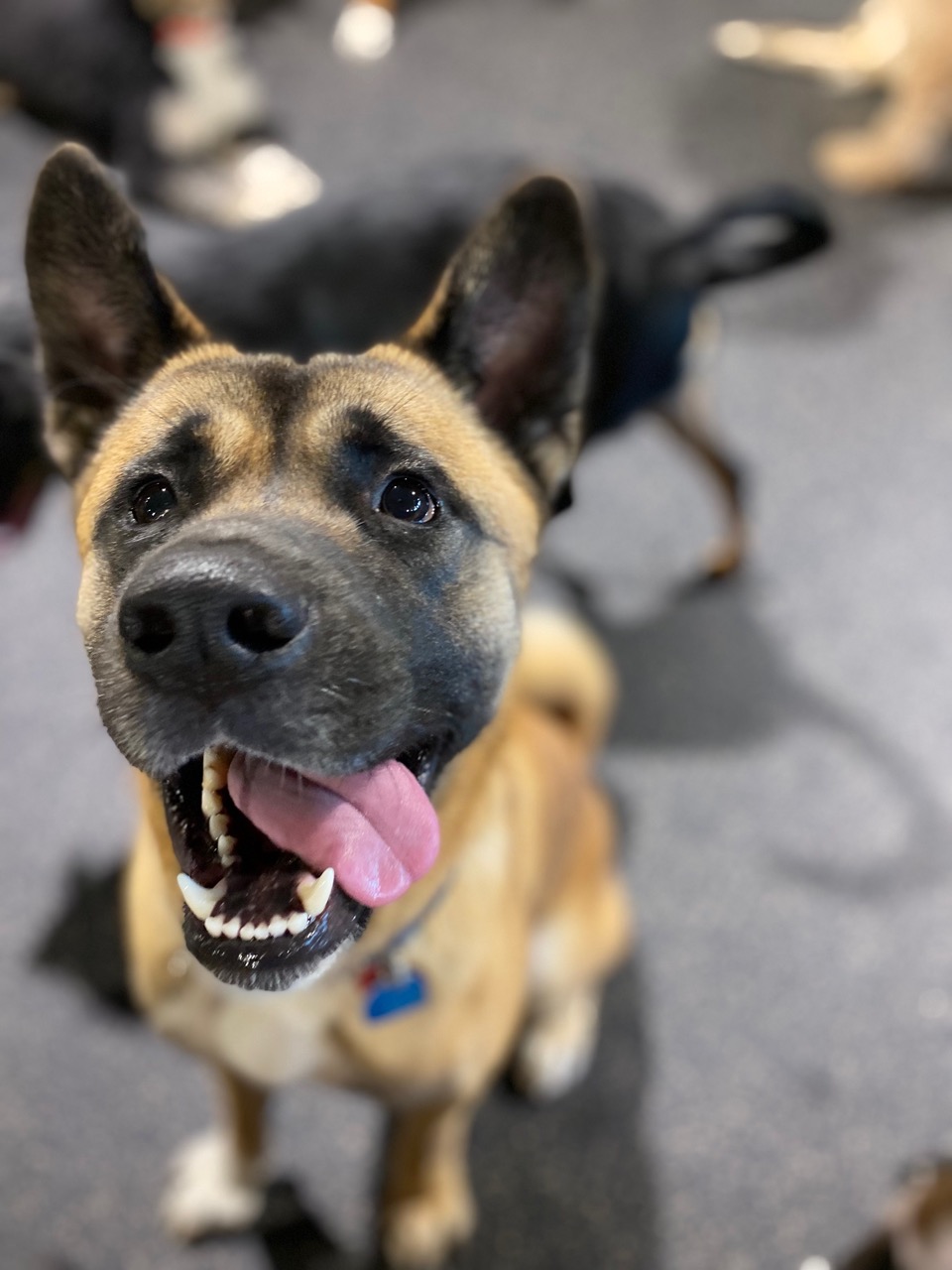
How to Read Dogs’ Body Language
Understanding dog body language is one of the most essential skills a dog owner, trainer, or caretaker can have. Dogs can’t talk like we do, but they’re constantly communicating through body posture, facial expressions, tail movement, and more. Being fluent in canine body language can help you build stronger bonds, prevent conflicts at the dog park or during play, and recognize signs of fear, stress, or aggression early.
Whether you’re looking for a “dog daycare near me” or researching “dog boarding near me,” understanding how dogs communicate can help you choose a facility that emphasizes safe, knowledgeable handling and happy playgroups.

Why Dog Body Language Matters
Dogs are social animals that rely on non-verbal communication to navigate the world. Unlike humans who use words, dogs use their bodies to express themselves. From a wagging tail to raised hackles, every movement means something.
Misinterpreting a dog’s signals can lead to bites, scuffles or stress for both the dog and their human companions. For professionals in pet care services—like those at Waldo’s Collars Dog Resort—knowing dog body language is a non-negotiable skill.
The Basics: How Dogs Talk With Their Bodies
Let’s break down the different body parts dogs use to communicate:
1. Eyes
- Soft, blinking eyes usually indicate relaxation.
- Hard stares often signal discomfort or potential aggression.
- Whale eye (when the whites of the eyes are visible) is a sign of anxiety or fear.
2. Ears
- Neutral ears depend on breed but usually indicate a relaxed state.
- Pinned back ears show fear or submission.
- Ears forward often signal alertness, curiosity, or potential aggression.
3. Mouth
- Relaxed, open mouth with tongue out = calm and happy.
- Closed mouth may indicate tension.
- Lip licking or yawning can signal stress or appeasement.
- Snarling or showing teeth is a clear sign of discomfort or aggression.
4. Tail
- Wagging tail isn’t always a happy tail. Pay attention to speed and position.
- High, stiff wag can mean excitement or aggression.
- Low, slow wag might signal insecurity.
- Tucked tail clearly shows fear or submission.
5. Body Posture
- Loose, wiggly body shows relaxation and friendliness.
- Stiff posture with weight forward is a sign of tension or assertiveness.
- Cowering, lowered body indicates fear or submission.
The American Kennel Club offers a great visual guide to these body cues.

Playful or Problematic? Reading Social Interactions
When you’re evaluating how dogs interact at a dog daycare near me or dog boarding near me facility, reading play cues is key. Play can sometimes look rough, but there are signals that help distinguish between fun and a fight.
Play Signals
- Play bow (front legs down, butt up) is a clear invite to play.
- Bouncy movements and exaggerated behaviors signal friendliness.
- Role reversal (e.g., switching who chases whom) shows cooperative play.
Signs of Trouble
- Stiff, fast movement or constant mounting.
- One dog trying to escape or hide.
- Lack of breaks or self-handicapping.
Staff at Waldo’s Collars Dog Resort are trained to monitor group play carefully, separating dogs who are stressed or overstimulated to maintain a positive environment.
Stress and Anxiety: What to Watch For
Dogs often mask their discomfort, but if you know what to look for, you’ll notice early signs of stress:
- Panting when it’s not hot
- Avoiding eye contact
- Hiding or retreating
- Licking lips, yawning, or shaking off (as if wet)
- Sudden shedding (especially in short-haired breeds)
If your dog shows these behaviors during drop-off at a new dog daycare or boarding facility, it’s worth asking how the staff handles anxious dogs.
Aggression: Reading the Warnings
Aggression is often misunderstood. Most dogs give plenty of warning signs before escalating. Learning these can prevent serious issues:
- Staring intensely
- Body frozen
- Growling or showing teeth
- Lunging without contact
- Snapping
These behaviors should never be punished without understanding the cause. At a high-quality facility like Waldo’s Collars Dog Resort, professionals are trained in behavior management, not just discipline.
Special Considerations by Breed
Some breeds have more expressive tails, others are more reserved facially. For example:
- Huskies often use vocalization more than body cues.
- Pugs or Bulldogs may have limited ear and facial movement.
- Border Collies (like our beloved Kicks) use intense eye contact as part of their communication style.
Knowing your dog’s breed-specific traits will make it easier to interpret their signals.
Why Staff Training Matters in Daycare and Boarding
If you’re searching for a dog boarding near me or dog daycare near me, don’t just look at prices and reviews. Ask about staff qualifications:
- Are they trained in dog body language?
- How do they introduce new dogs?
- What do they do if a dog becomes fearful or aggressive?
At Waldo’s Collars Dog Resort, our team is deeply trained in understanding canine communication. This helps us create a safe, enriching environment whether your dog is staying for a day or a week.

How to Improve Your Own Dog Language Skills
Want to get better at reading dogs? Here are some tips:
- Observe silently. Watch dogs at the park or in group play without intervening.
- Record playtime. You might notice cues you missed in real time.
- Take a class. Many trainers and schools offer dog communication workshops.
- Use resources like Dog Decoder, an app that helps you interpret dog body language.
Final Thoughts
Dogs are speaking all the time—we just have to learn how to listen. Whether you’re a pet parent dropping off your pup at a new dog daycare near me or choosing the best dog boarding near me option, your ability to read canine body language can make a world of difference.
At Waldo’s Collars Dog Resort, we believe that fluent dog-human communication is at the heart of everything we do. It’s how we create a home-away-from-home where every tail wag, nose boop, and happy bark tells us we’re getting it right.
